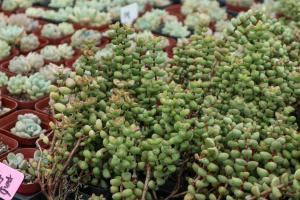How to Plant Winter Pots
Winter is a season of dormancy, but that doesn't mean your pots and planters should be left empty. With a bit of planning and creativity, you can turn your outdoor containers into a beautiful winter display. Here are some tips for planting winter pots:
Choose the Right Containers
The first step is to choose the right containers. Look for pots that are sturdy and able to withstand the cold weather. Terra cotta and ceramic pots are not ideal as they can crack in freezing temperatures. Plastic, metal or fiberglass pots are a better option. Make sure the pot has good drainage, as excess moisture can be harmful to plants during winter.
Select the Right Plants
Choose plants that can withstand the cold weather and will add color and texture to your pots. Evergreens such as junipers, spruce and pine are a great choice as they keep their leaves throughout the winter. Berries such as holly, cotoneaster and winterberry can add color to your pots. You can also plant ornamental grasses such as feather reed grass, switchgrass or fountain grass, which add texture to your pots and create interest.
Use the Right Soil
It's important to use the right soil for your winter pots. Choose a soil mix that is well-draining and lightweight. Avoid using heavy soils, which can lead to waterlogging and cause root rot. You can also add perlite, vermiculite or peat moss to improve soil drainage.
Arrange Your Plants
Before planting, plan the placement of your plants. Arrange the taller plants at the back of your pot and the shorter ones at the front. This will create depth and interest. You can also add decorative elements such as twigs, branches or pinecones to your pots for added texture and interest.
Water and Maintain Your Plants
Water your winter pots sparingly during the colder months, avoiding overwatering. Lack of sufficient drainage can result in waterlogged soil or the formation of ice, which can damage plant roots. Check your plants regularly and remove any dead or damaged leaves or branches to prevent the spread of disease. If you live in an area with heavy snowfall, make sure to brush the snow off the plants to prevent breakage.
With these tips, you can create a winter wonderland right on your doorstep. Winter pots not only add color and texture to your outdoor space, but also provide a much-needed source of food and shelter for birds and other wildlife during the colder months.

 how many times do yo...
how many times do yo... how many planted tre...
how many planted tre... how many pine trees ...
how many pine trees ... how many pecan trees...
how many pecan trees... how many plants comp...
how many plants comp... how many plants can ...
how many plants can ... how many plants and ...
how many plants and ... how many pepper plan...
how many pepper plan...
































